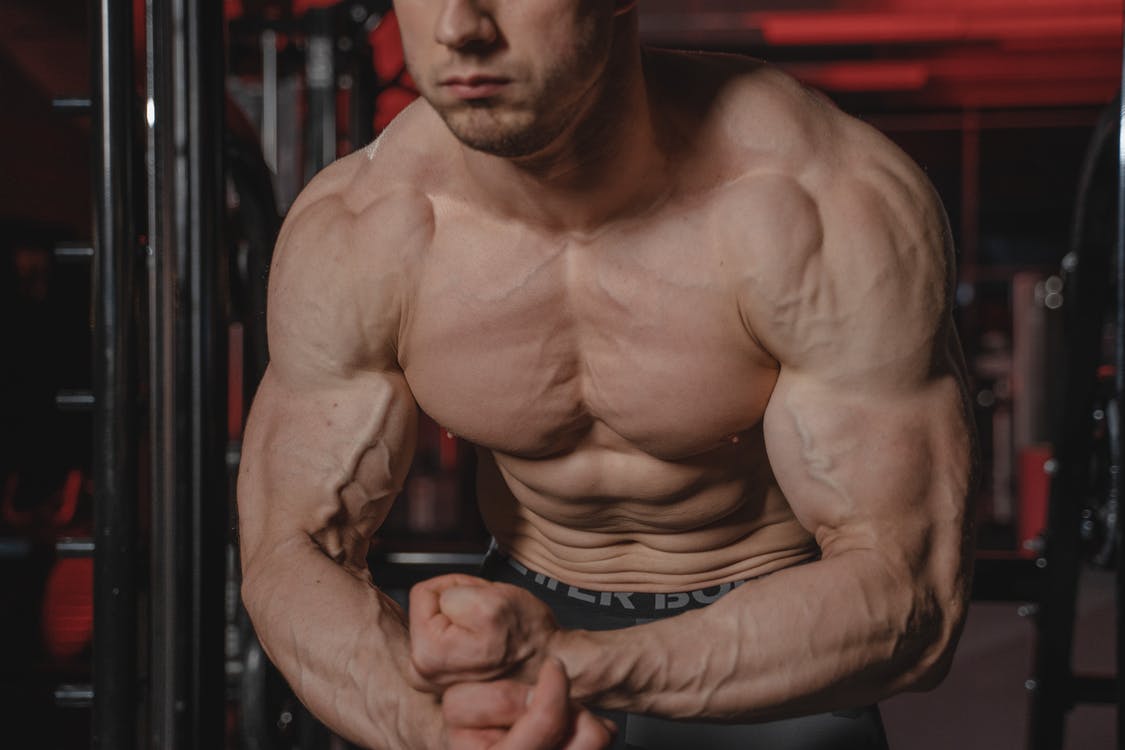Can you build muscle and burn fat? Yes, it is possible! The process is called anabolic. Unlike losing fat, building muscle increases total muscle mass. This process can take up to two months. The more time you have to dedicate to building muscle, the more benefits you will derive. But, the question remains, can you build muscle and burn fat at the same time? Fortunately, the answer is yes!
HIIT burns fat and builds muscle
HIIT can help you burn fat and build muscle at the same time. It can be done in many different ways, including sprinting, jumping roping, and using cardio machines. The key to this style of training is to push through the high intensity intervals and lower your heart rate during the low intensity ones. A high intensity workout is more dangerous than a low intensity one, so you should never do an all out sprint on an inclined treadmill. The workout should be done with complete concentration.
 HIIT workouts are highly effective for burning fat and building muscle because they make you burn more calories than other forms of exercise. They can increase your calorie expenditure by as much as 10%. HIIT also conditions your heart and lungs, making it easier to perform resistance training. These benefits make it possible to burn fat and build muscle in a short period of time. HIIT workouts can help you build lean muscle and tone your body.
HIIT workouts are highly effective for burning fat and building muscle because they make you burn more calories than other forms of exercise. They can increase your calorie expenditure by as much as 10%. HIIT also conditions your heart and lungs, making it easier to perform resistance training. These benefits make it possible to burn fat and build muscle in a short period of time. HIIT workouts can help you build lean muscle and tone your body.
Another advantage of HIIT workouts is that they increase your metabolism. When compared to jogging or weight training, HIIT increases your metabolism for hours after your workout. This happens because HIIT exercises increase the amount of oxygen in your blood after a strenuous activity. HIIT exercises improve your overall health, including your blood pressure, heart rate, and blood sugar levels. You can expect a better workout and better overall health when you combine it with regular weight training.
HIIT is a great way to get the results you desire without having to sacrifice your quality of life. Besides being fun and effective, HIIT workouts can be a great way to combat body composition problems. Kyjean Tomboc, a freelance writer, tried the vegetarian and paleo diets and finally found the best way to lose fat and build muscle. The key to a healthy body is eating real food, which HIIT helps you do.
Resistance training burns fat and builds muscle
Resistance training increases after-burn and your body’s ability to use fat as fuel. It increases the size of your muscles, which also means more calories burned even at rest. If combined with a healthy diet, resistance training burns fat and builds muscle at the same time. These are just some of the many benefits of resistance training. To discover all the benefits, follow these three simple steps to get started. And don’t forget to follow your exercise guide to avoid injuries.
The first step to a successful resistance-training regimen is a structured plan. This is an exercise program that features defined periods of increasing and decreasing training volumes. Another factor is intensity. Increased training intensity triggers a hormonal response that promotes muscle growth and fat utilization. A common resistance-training protocol includes super-sets, in which two exercises are performed in succession using opposite muscle groups. Other variations include circuits, where exercises are performed close to each other with limited rest.
The second step is to select a weight that is heavy enough to tire your muscles. For beginners, it is best to start off with lighter weights and gradually increase the resistance level. By choosing a lighter weight, you’ll be able to control your muscles better and build stronger muscle. You can then increase the weight you lift every time you perform a set. However, it’s important to note that resistance training requires a recovery period for your muscles.
Another key step to building muscle and burning fat is to increase your protein intake. In general, fat is a smaller proportion than carbohydrates. But protein helps in reducing hunger and can also help your body recomposition. Ideally, you should eat at least 1.6 grams of protein per kilogram of body weight each day. This is a realistic target, and research shows that it can help you lose fat and build muscle.
Compound movements stimulate total muscle mass
 Compounded movements engage two or more joints and activate multiple muscle groups at the same time. They burn more calories and build bigger muscles faster than isolation exercises because they exercise all the major muscle groups at once. Moreover, they increase your core strength and correct postural imbalances due to injuries or improper posture. Here are some reasons why compound movements are the best way to gain total body strength. All of these factors are beneficial for fat burning and muscle building.
Compounded movements engage two or more joints and activate multiple muscle groups at the same time. They burn more calories and build bigger muscles faster than isolation exercises because they exercise all the major muscle groups at once. Moreover, they increase your core strength and correct postural imbalances due to injuries or improper posture. Here are some reasons why compound movements are the best way to gain total body strength. All of these factors are beneficial for fat burning and muscle building.
The bench press is an excellent example of a compound movement, because it packs mass all over the shoulder girdle. For optimal results, lie down on the bench with your head and eyes directly underneath the bar. Position your feet naturally and vertically, then take a full grip of the bar. Try to squeeze the bar as hard as you can, so that you’re able to achieve maximum weight.
The first compound movement should be done at 70-75 percent of your 1RM, or two-thirds of it. If you’re not able to do this, train until you achieve failure, or get two or three reps left in your tank. This will allow you to increase your muscle mass and burn fat while decreasing the risk of injury. If you’re new to exercise, try consulting with a fitness professional or trainer. They can observe your technique and give you a workout schedule that is safe for you.
While compound movements stimulate total muscle mass and burn fat, they’re challenging, so you must be careful to keep form and technique correct. Ideally, you’ll perform these exercises three days a week, with one day of rest in between. Try to mimic the protocol that the Wake Forest study suggests: a one-rep maximum, and a maximum of 70% of your one-rep max. Remember to adjust your workouts as you improve strength.
Protein plays an important role in muscle maintenance
A diet high in protein is essential for muscle maintenance and growth. Protein is found in every cell of the body and is especially plentiful in muscle tissue. The body is able to produce proteins with the help of amino acids that are obtained from food. Protein is especially important to muscles, as it promotes recovery after exercise and muscle growth. Protein is also important for the immune system, as it helps antibodies seek out and attack potentially harmful substances.
While amino acid concentrations are important for protein synthesis, the availability of amino acids is of even greater importance. The body is able to synthesise more protein when it has sufficient amino acids available, and low concentrations of amino acids may prevent muscle growth. In addition to supplying the body with the necessary amino acids, protein also helps maintain the condition of muscles. However, protein intake is only as effective as the availability of amino acids.
Despite this fact, some studies have found that eating too much protein at one time does not support skeletal muscle health. Eating large amounts of protein at a single meal may still meet your RDA, but not be enough to maintain skeletal muscle health. In addition, many studies have found that consuming too much protein at one meal may contribute to a decrease in muscle size and function in older people. However, recent studies have shown that eating sufficient protein at each meal supports the daily recommended protein intake for older people.
Increasing the amount of protein in the diet is associated with a range of health benefits, including increased strength and muscle mass. It is also associated with improved quality of life, especially among the elderly. Although the cause-and-effect relationship is unclear, increased protein intake will result in better health outcomes for older individuals. There are many other benefits of increasing protein intake. In the long run, increasing muscle mass will improve your strength and function, leading to a better quality of life.
Losing fat and building muscle at the same time
The two processes of burning fat and building muscles aren’t mutually exclusive. They both have different processes and different physiological effects. In addition, while losing fat is a great way to increase muscle mass, building muscle isn’t the same thing as gaining weight. Building muscle requires a surplus of calories, while burning fat is the opposite. But the best part is that you can burn fat while building muscle.
Although people may think they can’t lose fat and build muscle at the same time, the truth is that they can achieve both goals if they exercise regularly and consume the right kind of foods. In fact, if you increase your daily caloric intake while building muscle, you can actually lose fat. You can achieve both goals if you eat more food than you burn. However, you shouldn’t go overboard.
The key is to focus on getting lean and building muscle. Building muscle increases insulin sensitivity, which makes the process of losing fat easier. The Modern Iteration of Losing Fat is all about essentialism, which means you double down on your essentials. The Modern Iteration recommends that you eat 500 calories below your maintenance level every day, get plenty of exercise, and perform resistance training four to five days a week.
The best way to gain muscle is to increase your protein intake. Nutritionists recommend that you should consume one gram of protein per pound of bodyweight each day. To make sure you’re getting the correct amount, it’s best to divide your daily intake into five or six small meals. Aim to consume 25 to 30 grams of protein each meal. Protein-rich foods include nuts, chicken, and dairy products. Strength-training exercises are another important way to build muscle while losing fat.
Concerned about low testosterone? Click here to find out more
